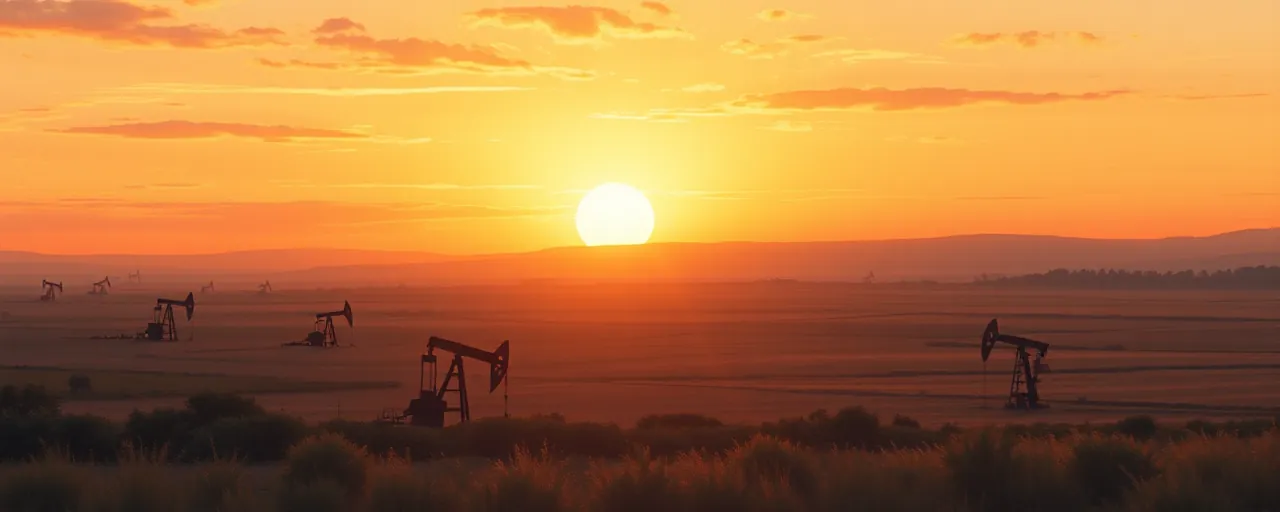A Resurgent American Economy
President Trump’s declaration that the economy is thriving and energy prices are plummeting isn’t just rhetoric; it’s a reality taking shape in 2025. His administration’s relentless push to deregulate and unleash America’s fossil fuel potential is delivering tangible results. From soaring job numbers to declining gasoline costs, the evidence is clear: Trump’s vision is working. While naysayers cling to outdated narratives of economic gloom, the data paints a brighter picture, one where American workers and families are finally catching a break.
The U.S. economy is projected to grow at a robust 2.0% to 2.4% this year, following a stellar 2.8% in 2024. Unemployment hovers at a low 4.1% to 4.3%, with job creation steady at 130,000 to 150,000 new positions monthly. Inflation, a persistent thorn in the side of American households, has eased to 2.4% in March 2025, the lowest in months. These aren’t just numbers; they’re proof of a strategy rooted in unleashing market forces and prioritizing American energy dominance.
Contrast this with the economic stagnation and regulatory chokehold of the previous administration. Under Biden, clean energy mandates and climate policies stifled growth, burdened businesses, and drove up costs. Trump’s reversal of these measures, including withdrawing from the Paris Agreement and slashing renewable subsidies, has freed up capital for real economic drivers: oil, gas, and American ingenuity. Critics may wail about environmental rollbacks, but the average American cares more about affordable gas and a steady paycheck than appeasing globalist agendas.
Yet, the fight isn’t over. Global market volatility and geopolitical tensions, from Russia’s aggression to China’s economic maneuvers, threaten to derail progress. Trump’s answer? Double down on energy independence and economic resilience, ensuring America isn’t at the mercy of foreign producers or inflated green promises.
Energy: The Engine of Prosperity
At the heart of Trump’s economic revival is a bold energy strategy. By declaring a national energy emergency and fast-tracking oil and gas drilling, the administration is tapping into America’s vast resources. Crude oil production is set to hit a record 13.5 million barrels per day in 2025, cementing the U.S. as the world’s top producer. This isn’t just about bragging rights; it’s about lower prices at the pump and more jobs in states like Texas, North Dakota, and Pennsylvania.
Oil prices are projected to drop from $81 per barrel in 2024 to $74 in 2025, and even lower to $66 by 2026. This decline, driven by increased U.S. supply and global market dynamics, is a direct result of Trump’s deregulation. By streamlining pipeline approvals, expanding offshore drilling, and easing methane rules, he’s removed barriers that once stifled production. The result? Families are spending less on fuel, and businesses are saving on energy costs, fueling economic expansion.
Skeptics argue that market forces, not policy, drive these trends. They point to the shale boom, which began years ago, or global supply-demand shifts. But this ignores the chilling effect of Biden’s regulatory overreach, which deterred investment and slowed growth. Trump’s policies have reinvigorated the industry, with private investment surging in response to a pro-growth environment. To claim otherwise is to dismiss the real-world impact of leadership that prioritizes results over ideology.
Still, challenges loom. OPEC+ production cuts and geopolitical flare-ups could spike prices, while tariffs may raise costs for imported goods. But Trump’s focus on domestic production mitigates these risks, ensuring America isn’t held hostage by foreign cartels or supply chain disruptions. Unlike the green zealots who bet on unreliable renewables, Trump’s strategy delivers energy security and economic stability.
Debunking the Doomsayers
Opponents of Trump’s agenda, particularly those wedded to climate activism, warn of economic peril and environmental catastrophe. They cherry-pick data, lamenting inflation or tariff-driven price hikes, while ignoring the broader context. For instance, they decry tariffs as inflationary, yet fail to acknowledge how these measures protect American jobs and industries from unfair foreign competition. The projected GDP growth and low unemployment rate undermine their apocalyptic predictions.
Public perception, skewed by partisan divides, also fuels their narrative. Polls show 46% of Americans believe the economy is worsening, with Democrats disproportionately pessimistic at 76%. This gloom stems from years of fearmongering about fossil fuels and deregulation, coupled with selective framing of economic data. But the reality is starkly different: 42% of Americans expect cheaper energy, and Republicans, at 73%, are rightly optimistic about Trump’s policies. The naysayers’ focus on inflation or deficits conveniently ignores the job growth and energy savings that benefit everyday citizens.
The clean energy crowd’s objections are equally misguided. They claim Trump’s fossil fuel push will derail the energy transition, yet solar and battery projects still account for 81% of new U.S. power generation in 2025. Market forces, not federal mandates, are driving this trend, proving that innovation thrives without heavy-handed regulation. Their obsession with global agreements like the Paris Accord overlooks the economic costs and negligible impact on emissions, as China and India continue to dominate global pollution.
Securing America’s Future
Trump’s vision extends beyond immediate gains. By prioritizing energy independence and economic strength, he’s laying the foundation for a prosperous, self-reliant America. His policies empower workers, protect industries, and shield families from the volatility of global markets. While tariffs and immigration enforcement may spark short-term challenges, they’re strategic moves to ensure long-term stability, safeguarding jobs and national security.
The alternative, a return to the stifling regulations and globalist policies of the past, would cripple America’s potential. Trump’s critics may cling to their vision of a green utopia, but their ideas have proven costly and ineffective. The path forward is clear: unleash America’s energy, strengthen its economy, and trust in the resilience of its people. This is the legacy Trump is building, one that will outlast the noise of his detractors.
